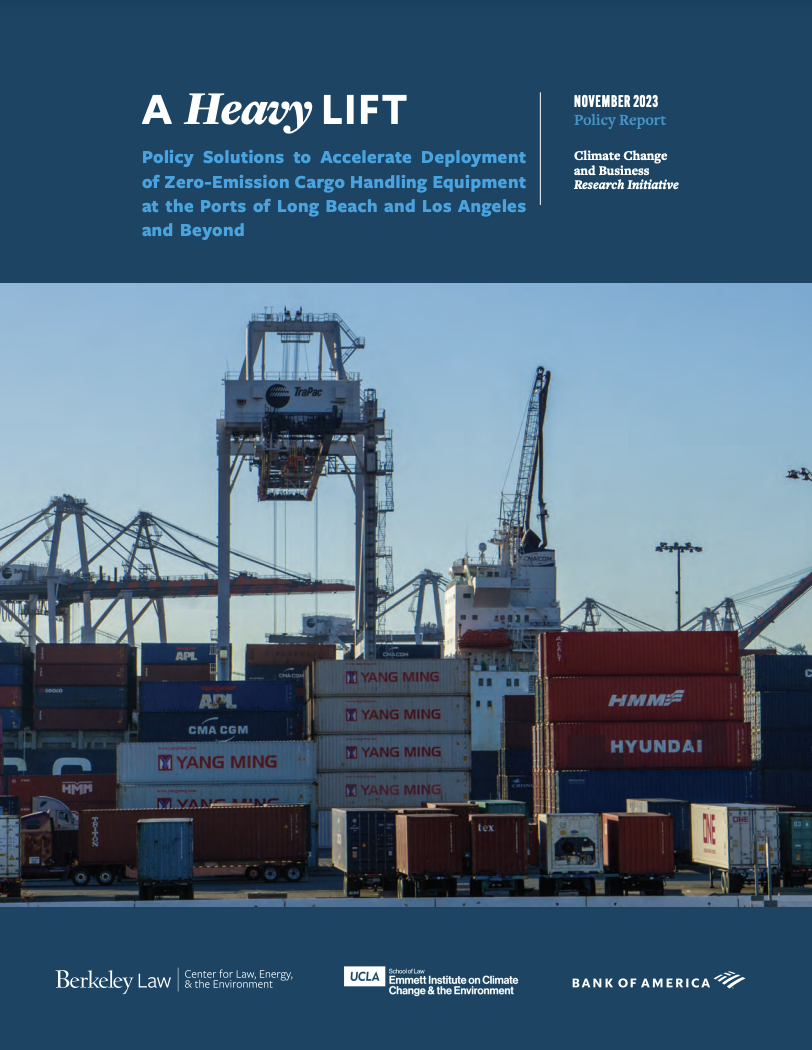November 2023
The movement of goods through the Ports of Los Angeles and Long Beach is a major source of air pollution and greenhouse gas emissions in the L.A. region. The South Coast Air Quality Management District has reported that the Ports are “the single largest fixed source of air pollution in Southern California.” And neighboring communities—predominantly low-income communities of color—bear the brunt of this pollution, suffering from smog and toxic air pollution from port equipment.
This new report, conducted in partnership with the UCLA Law Emmett Institute on Climate Change & the Environment, surveys the biggest obstacles to speedy electrification, including inadequate grid and charging infrastructure, evolving zero-emission technology for cargo handling equipment, and fear among communities and workers of job loss and of increased emissions from expanded port activities. The report also presents policy solutions to get around these obstacles.
To address the challenges, the report offers the following priority recommendations:
- State and regional leaders could create technology-forcing mandates and clear, enforceable implementation deadlines, with penalties for non-compliance, to catalyze the zero-emission cargo handling equipment transition.
- The Ports and local electric utilities could proactively deploy “no regret” infrastructure, including increasing grid capacity and upgrading distribution networks that will be needed regardless of how zero-emission cargo handling equipment is powered.
- State and local government leaders could implement policies to promote job preservation, local job creation, and worker training, such as programs that encourage Ports and terminal operators to partner with local training organizations to upskill and reskill the workforce to use the new vehicles and technologies.
These and other solutions can be found in the full report here.
Contact Ethan Elkind for more information.
